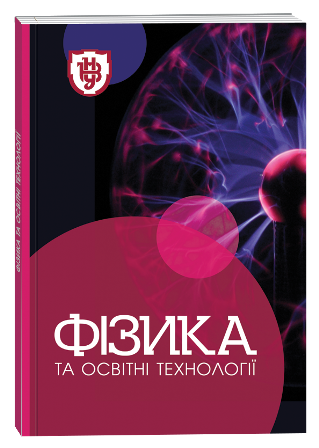IMMERSIVE TECHNOLOGIES IN THE CONTEXT OF DISTANCE AND BLENDED LEARNING
DOI:
https://doi.org/10.32782/pet-2023-2-5Keywords:
immersive technologies, augmented reality, virtual reality, distance learning, blended learning, teaching physicsAbstract
The article reveals the key aspects of the use of immersive technologies in distance and blended learning. Recent studies have shown the importance of immersive technologies in improving the quality of education and engaging students in the study of natural sciences, especially in conditions where traditional teaching methods are limited or insufficient. The purpose of our work is to determine the methodological features of using virtual and augmented reality technologies. The potential benefits of using these technologies are analyzed, in particular, their ability to create realistic simulations of the real world, promote interactivity and cooperation between students, and provide an individualized approach to learning. The article highlights the advantages and problems arising in the process of using immersive technologies of virtual reality (VR), augmented reality (AR) and mixed reality (MR) in the context of distance and blended learning. Special attention is paid to the analysis of augmented reality applications available for free use in the educational process: ArBook, Electricity AR, PhET Interactive Simulations, GO-LAB, Labster. The article presents methodical methods of using technologies in teaching physics, which were tested by the authors in practice. To determine the readiness of students to use immersive technologies and their satisfaction with learning in the new environment, a survey was conducted, the results of which showed that studying physics using immersive technologies makes students and pupils enjoy the learning process and improves overall results. The emphasis is placed on the need for further research and development of immersive technologies in order to ensure accessibility and improve their educational potential, optimize the modern educational process and reduce the cost of teaching aids. Immersive technologies have great potential to improve the learning process, which encourages teachers and researchers to actively research, implement and develop these technologies, create new methods of their application to ensure more effective learning.
References
Гончарова Н.О. Технологія доповненої реальності в підручниках нового покоління. Проблеми сучасного підручника. 2019. Вип. 22. С. 46–56. https://doi.org/10.32405/2411-1309-2019-22-46-56
Ковальчук О.І., Бондаренко М.П., Охрей А.Г., Прибитько І.Ю., Решетник Є.М. Особливості використання імерсивних технологій (віртуальної і доповненої реальності) в медичній освіті та практиці. Morphologia. 2020. Том 14 (№ 3). С. 158–164. https://doi.org/10.26641/1997-9665.2020.3.158-164
Литвинова С. Г., Соколюк О. М. Критерії та показники оцінювання якості навчальних об’єктів доповненої реальності в підручниках фізики. Інформаційні технології та засоби навчання, 88(2), 23–37. https://doi.org/10.33407/itlt.v88i2.4870
Сальник І.В. Підходи до організації лабораторного практикум у підготовці вчителя фізики під час дистанційного навчання. Науковий вісник Льотної академії. Серія: Педагогічні науки. 2022. Вип. 12. С. 108-116. https://doi.org/10.33251/2522-1477-2022-12-108-116
Сальник І.В., Фоменко О.В. Використання технологій доповненої реальності в умовах дистанційного та змішаного навчання в закладах фахової передвищої освіти. Імерсивні технології в освіті: збірник матеріалів ІІ науково-практичної конференції з міжнародною участю, 22 вересня 2022 року, м. Київ, Інститут цифровізації освіти НАПН України, с. 163-168.
Сироватський О. В., Семеріков С. О., Модло Є. О., Єчкало Ю. В., Зелінська С. О. Проектування програмних засобів доповненої реальності навчального призначення. Computer Science & Software Engineering: proceedings of the 1st Student Workshop (CS&SE@SW 2018), Kryvyi Rih, Ukraine, November 30, 2018. – С. 193–225.
Сороко Н.В. Підходи до використання імерсивних технологій в закладах загальної освіти. Мультимедійні технології в освіті та інших сферах діяльності: науково-практична конференція з міжнародною участю. 2 листопада 2021 р.– К.: НАУ, 2022 – С. 113-115.
Тестування додатку з фізики «BookVAR» для закладів освіти Києва. – https://don.kyivcity.gov.ua/news/11129.html
Ткачук В.В., Семеріков С.О., Єчкало Ю.В., Маркова О.М., Мінтій М.М. Засоби розробки доповненої реальності для Web: порівняльний аналіз. Фізико-математична освіта. 2020. Випуск 2(24). С. 159-167. https://fmojournal.fizmatsspu.sumy.ua/journals/2020-v2-24/2020_2-24-Tkachuk-Semerikov_FMO.pdf
Цирульник С.М. Застосування технологій доповненої реальності у процесі підготовки фахівців з радіоелектроніки. Відкрите освітнє е-середовище сучасного університету, 2019. с. 355-362. Електронне видання. URL: https://doi.org/10.28925/2414-0325.2019s32
Hsiu-Mei Huang, Ulrich Rauch, Shu-Sheng Liaw, Investigating learners’ attitudes toward virtual reality learning environments: Based on a constructivist approach. Computers & Education, Volume 55, Issue 3, 2010, P. 1171-1182, https://doi.org/10.1016/j.compedu.2010.05.014.
Jared A. Frank, Vikram Kapila. Mixed-reality learning environments: Integrating mobile interfaces with laboratory test-beds. Computers & Education, Volume 110, 2017, P. 88-104, https://doi.org/10.1016/j.compedu.2017.02.009.
Soroko N. The augmented reality functions to support the STEAM education at general education institutions. Physical and Mathematical Education. 2021. Issue 3(29). Р.24-30. https://doi.org/10.31110/2413-1571-2021-029-3-004
Tien-Chi Huang, Chia-Chen Chen, Yu-Wen Chou, Animating eco-education: To see, feel, and discover in an augmented reality-based experiential learning environment. Computers & Education, Volume 96, 2016, P.72-82, https://doi.org/10.1016/j.compedu.2016.02.008.
Yiannis Georgiou, Olia Tsivitanidou, Christian Eckhardt, Andri Ioannou. A learning experience design for immersive virtual reality in Physics classrooms. 6th International Conference of the Immersive Learning Research Network (iLRN 2020) Online, June 21-25, 2020. https://doi.org/10.23919/iLRN47897.2020.9155097








